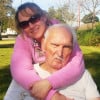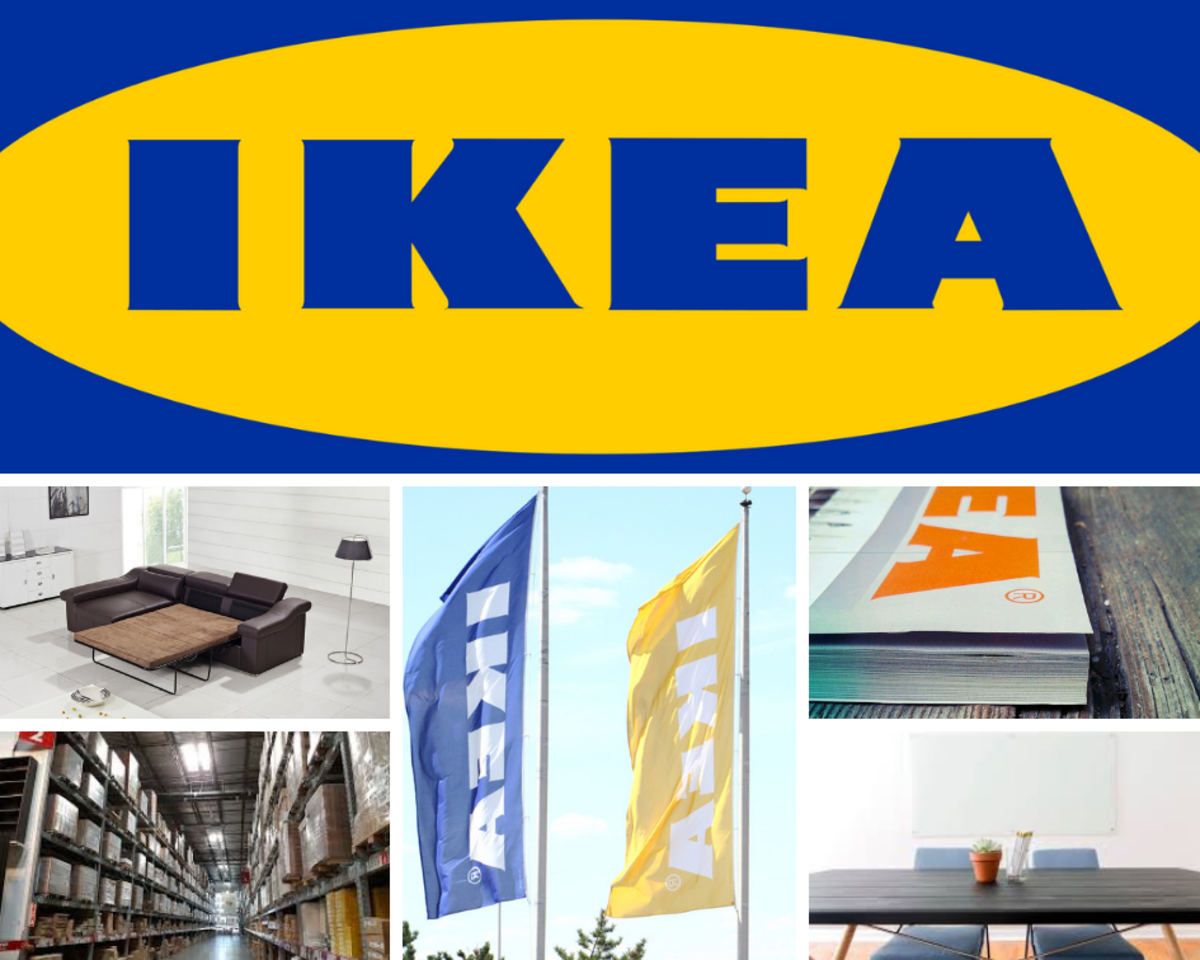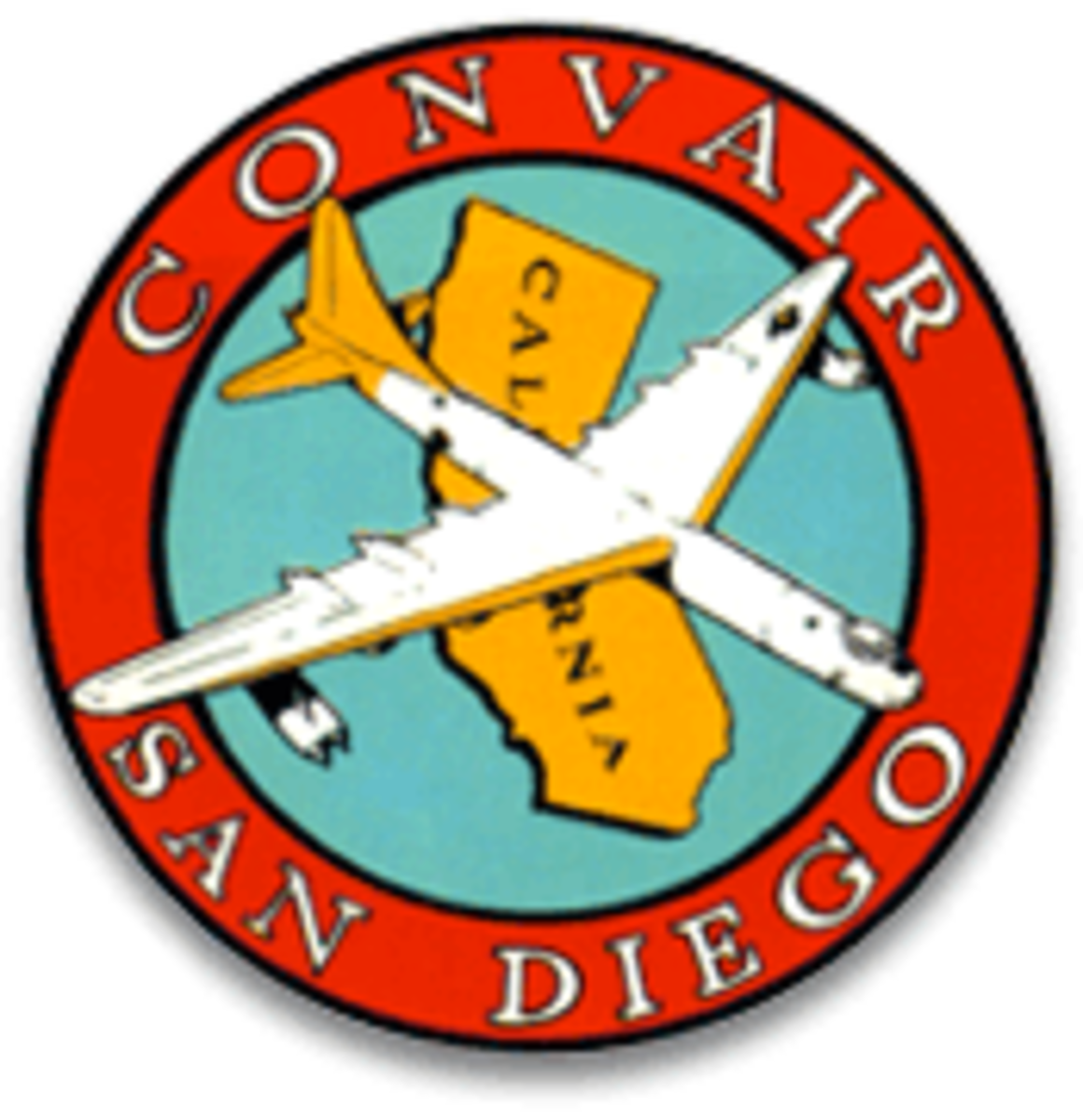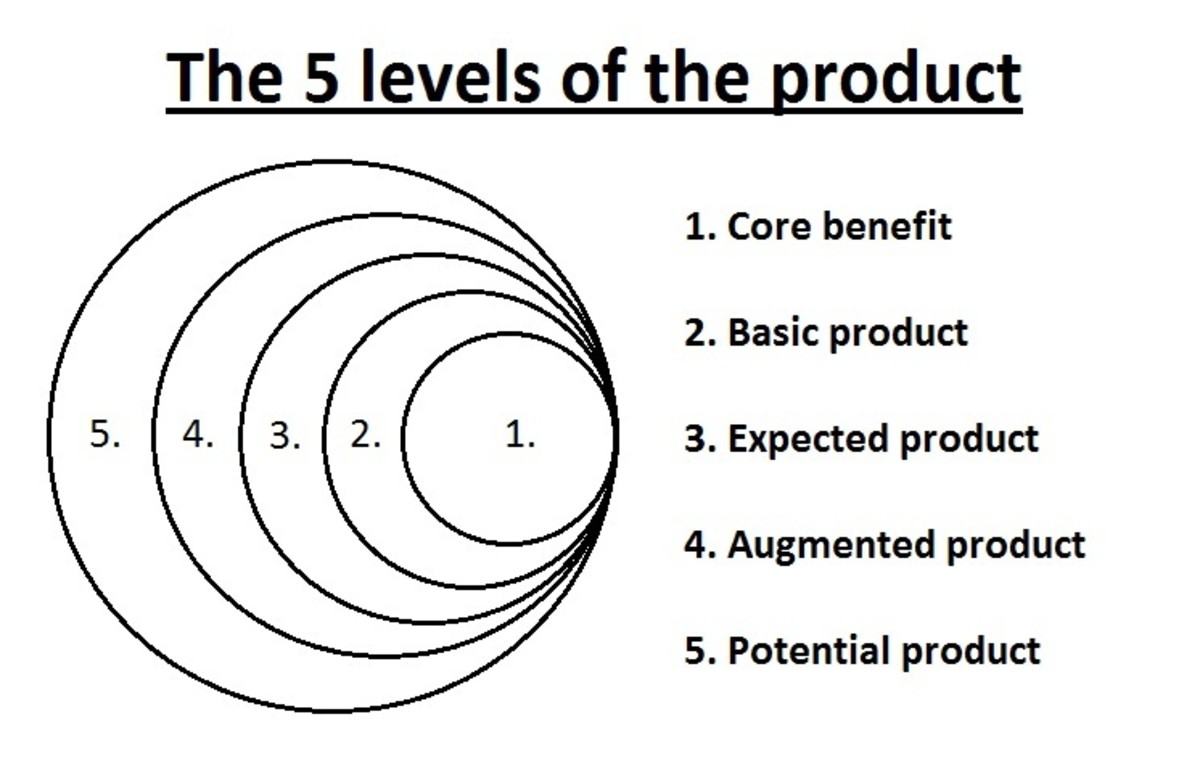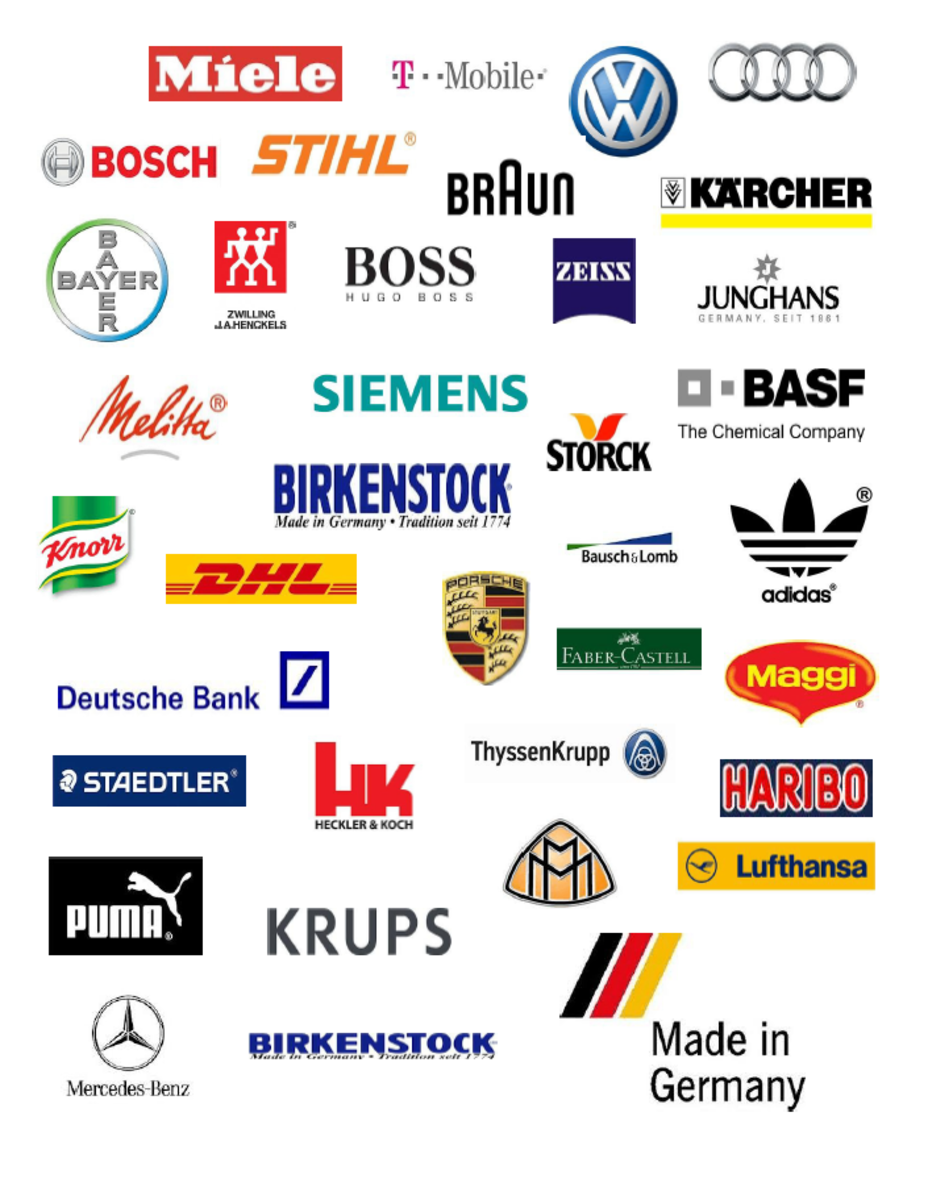WD-40, The History & Growth of an American Branding & Manufacturing Icon With List of Uses
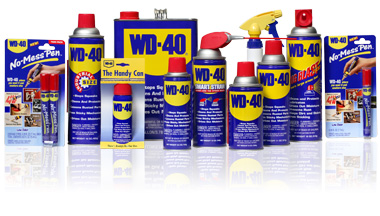
Aerospace Giant Convair is Among First To Use WD-40
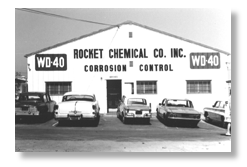
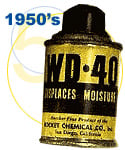
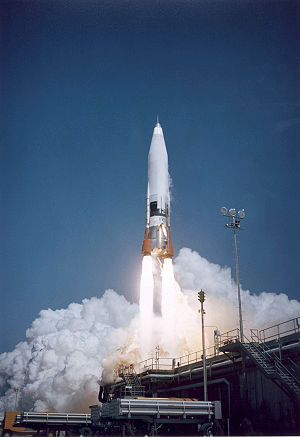
It All Began With The Rocket Chemical Company
In 1952, at the height of the California aerospace industry boom, a little known San Diego based chemist by the name of Norm Larsen, along with three investors, formed a company that they called the Rocket Chemical Company, from which they planned to supply companies like Convair, and General Dynamics, with a line of rust prevention solvents and degreasers. Incorporating the company, whose name made it sound much larger than the reality of its three employees and single room operation in 1953, the Rocket Chemical Company, Inc., introduced a new product to use in the displacement of water and moisture as a way to protect and restore metal parts and tools, whose formula, Norm Larsen had, after a grand total of forty attempts, recently perfected. In honor of those forty tests, they called their new product, WD-40 or Water Displacement perfected on the fortieth try.
San Diego based aerospace company, Convair, a division of the larger, General Dynamics, who was already known for the production of such landmark aircraft as the Convair B-36 Bomber, the F-102 Delta Dagger, and the F-106 Delta Dart, and who had recently tossed their hat into the ring of the fledgling space program with the building of the Air Force designed, SM-65 Atlas Missile, the first American intercontinental ballistic missile, (ICBM), which was capable of boosting a nuclear warhead to any target on earth, was among the very first of the Rocket Chemical Company, Inc.'s customers, first using the new product to protect the outer skin of the Atlas Missile from rust and corrosion. WD-40 worked so well, that Convair employees began to sneak cans out of the plant for use at home
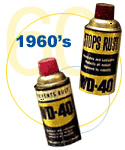
WD-40's Consumer and Industrial Markets
1). Aviation
|
|---|
2). Automotive
|
3). Manufacturing
|
4). Sporting Goods
|
5). Hardware
|
6). Home Improvememts
|
7). Construction
|
8). Farming
|
In 1993 WD-40 was found to be in four out of every five American Households and to be used in the work place of 81% of all professionals.
WD-40 Goes Commecial
The fact that WD-40 had become so popular with the employees of Convair and General Dynamics, that they were willing to smuggle the cans of the corrosion preventative from the plant for use at home, had not been lost on Norm Larsen.
In the later 1950s, with the new decade looming just over the horizon, the chemist began to wonder about the possibility of marketing his secret recipe to for retail; Surely, he must have reasoned, if the aerospace employees had found uses for it in their own homes, then so too would the average American consumer. Having safely established WD-40 for industrial use in the aerospace industry with companies like Convair and General Dynamics, Norm Larsen turned his sights on the public arena and began to experiment with the idea of putting his product in an aerosol can and marketing it as an all-purpose corrosion preventative and lubricant.
WD-40 went commercial in 1958, when the petroleum based solvent made its retail debut, appearing on the shelves of local San Diego area hardware and sporting goods stores, in short squat-looking aerosol cans of yellow and black. (The now iconic blue and yellow packaging with the bright red cap, would not appear until the early 1960s) The response of the general public was positive and nearly immediate, and by 1960 the demand for WD-40 was so great, that the company employees, all of whom were now selling an average of forty-five cases a week from the trunks of their cars to local retailers who couldn’t keep the product on the shelves.
Time would prove that not only was Norm Larsen the chemist, also had pretty decent marketing instincts. Over the next half century or so, WD-40 become an internationally known phenomena Found in over 80% of homes world-wide and garnering an estimated worth of over billion dollars, in less than fifty years.
Not bad for a company that started out as a one room operation with just three employees!
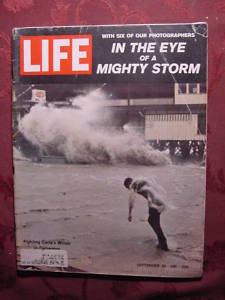
25 Uses For WD-40 You May Not Have Thought Of
1).
| Remove Road Tar From Your Car
| |
|---|---|---|
2).
| Remove Rust Stains
| |
3).
| Remove Grease
| |
4).
| Remove Ink From Blue Jeans/Hands
| |
5).
| Removes Playdough From Hair
| |
6).
| Removes Adhesive Labels
| |
7).
| Cleans and Polishes Granite Counter Tops
| |
8).
| Cleans and Polishes Brass Headstones
| |
9).
| Adds Moisture and Preserves Ivory & Bone Items
| |
10).
| Spray on Hands Before Using Heavy Adhesives to Prevent Sticking
| |
11).
| Spray On Fingers To Make Smoother Finger Spinning Freestyle Frisbee Throws
| |
12).
| Removes Playdough From Hair
| |
13).
| Soften Stiff Leather Sandals, Baseball Gloves, & Skate Boots
| |
14).
| Spray Around Bottom Of Garbage Cans To Prevent Animals From Getting In
| |
15).
| Spray on Bathroom Mirrors to Prevent Fogging
| |
16).
| Spray Bottom of Chan Link Fence Around Garden To Keep Out Rodents & Rabbits
| |
17).
| Use a Full Can As A Paperweight
| |
18).
| Use 2 Full Cans As Bookends
| |
19).
| Use Bottom Of Can to Draw Pictures of Perfect Circles
| |
20).
| Use Can To Prop Open Window
| |
21).
| Spray On Watch Band To Prevent It From Pulling Out Arm Hairs
| |
22).
| Gives Bowling Balls Less Grab On Lanes
| |
23).
| Removes Crayons From Walls And Television Screens
| |
24.)
| Frees Stuck Legos
| |
25).
| Unclogs Shower Heads
|
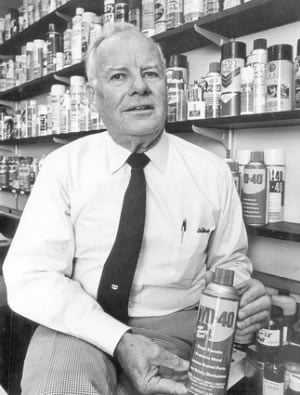
Hurricane Carla, John S. Barry, A Name Change, & Viet Nam
What do a category four hurricane, marketing legend John Steven Barry,and the Viet Nam War, all have in common? They are all key components in the marketing of WD-40 and each is responsible in their own way for the phenomenal and unprecedented growth in popularity that has resulted in making the little solvent that could an international household name, and in making a single product company into a branding legend.
Hurricane Carla September 11, 1961
In September of 1961, with demand for their solvent growing not only within the aerospace industry, but within the local retail market as well, The Rocket Chemical Company, which had with the hiring of four new employees the previous year, doubled in size to a work force of seven people, was beginning to look toward the future, and then Mother Nature stepped in to give them a helping hand in the form of a category five tropical cyclone, that turned into Hurricane Carla, and made its way toward the U.S. Gulf Coast.
On September 11, 1961, Hurricane Carla, a category four hurricane with sustained winds of between 88 - 115 mph, made land fall in between Port O'Connor and Port Lavaca, Texas. With wind gusts reported as high as 170 mph. The storm surge near the bays was measured as high as twenty-two feet, and in some places penetrated ten miles inland. The storm spawns twenty-six tornadoes, all of which touch down within the hurricane's area of circulation, one of which is an F4, that rips through the city of Galveston killing an estimated half a dozen people. One of the worst storms to ever hit the U.S., and the second most powerful storm to ever strike Texas. The evacuation of over 500,000 Texas residents is the all-time largest peacetime evacuation in history, and the damage, which totals in the billions, is reported all the way to the Mississippi River delta.
On the following Saturday, September 16, 1961, the first ever fully loaded truck of WD-40 departs San Diego, California. It is filled floor to ceiling with the concentrate that Rocket Chemical Company employees had sacrificed their weekend to produce, and was sent to the hurricane victims of the Gulf Coast region to help them recondition rain and flood damaged equipment and automobiles, giving the small San Diego company and it's one of a kind single product, its first taste of national recognition.
John Steven Barry,
WD-40 President & Chief Executive Officer
1969 - 1990
Following the death of its chief executive officer, Cy Irving, in 1969, The Rocket Chemical Company, replaces him by hiring his son-in-law, John Steven Barry.
John S. Barry was born in Minneapolis in 1924, and had earned a degree in mechanical engineering from the University of Minnesota before enlisting in the United States Navy Officer Candidate Program, which allowed him to study at both Harvard and Columbia University. He eventually earned a master’s degree in business from Massachusetts Institute of Technology, and shortly thereafter, went to work for 3M. He was later recalled by the Navy to serve during the Korean Conflict, but returned to 3M afterward, before replacing his father-in-law as the president and chief executive officer of the Rocket Chemical Company.
John Barry, who once said in an interview, (about WD-40), "we appear to be a manufacturer, but we are really a marketing company," was a marketing guy with great instincts, and under his leadership, the small San Diego company would flourish.
At the end of 1970, Barry's first full fiscal year, the company had a net worth of approximately $2 million dollars, and was being distributed to 1,200 wholesalers. Ten years later, in 1980, John Barry had increased its distribution to 14,000 wholesalers, and in 1990, the company's net worth was estimated to be at about $91 million. At the time of John S. Barry's death in July of 2009, nearly nineteen years after stepping down as the company's chief executive office, and nearly nine years after leaving his role as Chairman of the Board, WD-40 was reported to be on a shelf or in the garage of four out of every five American homes, and to be used in the work place by an astounding eighty-one percent of all professionals world-wide. The company, now known as the WD-40 Company, had risen to what is most likely far above the 1953 expectations of Norm Larsen and the three original investors of the Rocket Chemical Company, and was worth an estimated $317 billion.
How Did He Do It?
John Barry brought with him to the Rocket Chemical Company, not only his education and experience, but his incredible instinct for marketing. His expertise and vision for the future brought the small local company to the national and international level with a cohesive and stable marketing plan.
Citing the fact that the Rocket Chemical Company didn't actually make rockets, one of the very first actions taken by John Barry upon assuming the position of chief executive officer of the Rocket Chemical Company, was to change its name to reflect upon the company's only product. Next he cleaned up and changed the packaging, resulting in the iconic blue and yellow can with the little red cap that is now familiar all over the world. He increased the advertising budget, and began the push for an increase in distribution, including the push to get WD-40 into the supermarket aisles where he knew that people have a strong tendency to impulse buy, and an aggressive program of marketing in the foreign markets.
Knowing that word of mouth was the best kind of free advertising, John Barry was a believer in the power of the free sample, and used them often as a promotion tool. During the early 1970s, the newly christened WD-40 Company sent 10,000 free samples a month to soldiers entrenched in the jungles of Viet Nam to help maintain their weapons in the tropical climate.
Although John Barry was not with the company at the time of WD-40's creation, he was almost obsessively protective of not only the secret formula, but the trademark and packaging as well, and to that end, John Barry refused offers from big chain retailers such as Sears Roebuck, who had approached him about the possibility of private label distribution. In what was probably the riskiest and yet the smartest of all of the company's marketing maneuvers, the formula for WD-40 was never registered with the United States Patent Office. This meant that they would never have to publicly divulge the ingredients of the formula, allowing the secret recipe to remain a secret. This resulted in making WD-40, just like Kleenex or Band-Aid, synonymous with the product. So, even though companies like Dupont, and Mr. Barry's own former employer 3M were making comparable products, it was WD-40 that would claim the market share; something that John Barry would acknowledge in a statement given in both 1980 and 1988 interviews with Forbes Magazine in which he said (in reference to similar products being manufactured by competing companies; " what they don't have is the name."
WD-40 Goes Public, Becomes an Icon, Gains a Fan Club
Three years after John S. Barry took the helm at the Rocket Chemical Company, the company name had been changed, the packaging had been updated, and the first part of John Barry's marketing and distribution plan had been completed. Sales had grown to more than one million cans a week and it was time to take the company public. The WD-40 Company, Inc., listed as an Over the Counter, went public in 1973, and the stock price increased by sixty-one percent on the first day of listing.
In less than fifty years, a local small business with three employees, has risen to the top of the national and international heap, making history with the sales and marketing of its only product; a simple solvent with a top secret formula that is still packaged today in its iconic blue and yellow can with the bright red straw and cap. It may be the only product of its type whose customers devotion has spawned an international fan club that in 2006 was an astonishing 100,000 members strong, and thanks to the WD-40 Fan Club, what started out as a rust prevention solvent and degreaser to be used in the aerospace industry, now has a list of uses that is two-thousand plus and growing, and is featured in at least five books;The WD-40 Book, (featuring many user testimonialsand the wacky humor of the Duct Tape Guys) was published in 1997, The Big Damn Book of Sheer Manliness (1997, General Publishing), Polish Your Furniture With Panty Hose (1995, Hyperion), WD-40 For the Soul; The Guide to Fixing Everything (1999, TV Books), and Talking Dirty With the Queen of Clean.
All of which lends credence to WD-40's title as one of the all-time American Branding Legends.
